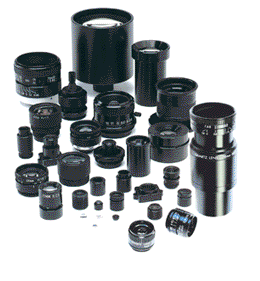High resolution lenses for machine vision — standard and custom lens design
LED Technology In Daily Living
High Resolution Lenses for machine vision, instrumentation, inspection and vibration-sensitive applications. Standard and custom hi-res lens assemblies.

LED Technology
LED technology surrounds us every day, from the moving LED signs that dot the roadways to flashlights and television and computer monitors. These light-emitting diodes (LEDs) have fast become a crucial part of electrical components. With LED technology the design of equipment ranging from traffic lights, surveillance cameras and LED displays are becoming more prevalent.
Wavelengths and LEDs
The wavelength on which an LED operates provides circuit designers the information on the color of light that will be emitted by the LED. It’s the semiconductor material that drives the color of the LED that is emitted as well as the color of the plastic housing in which the LED is encased. There are some LEDs on the market that can operate on myriad wavelengths and this means a designer may be able to use fewer LEDs to come up with the desired color combination.
Wavelength LED Primer
- Blue LEDs’ wavelengths range from 430-505 nanometers (nm) and its LED dye material is made up of silicone carbide or gallium nitride. LEDs of this color burn at an intensity of 100 to 2,000 mcd.
- A green LED has a wavelength range of 525 to 570 nm and burns with an intensity of 80 to 1,000 mcd. The LED dye for a green light is indium gallium aluminum phosphide.
- Orange LEDs use indium gallium aluminum phosphide as its dye material and have a wavelength rage of 605 to 625 nm.
- Red LEDs have forward voltages of 1.8 to 2.2 and burn with an intensity of 200 to 3,500 mcd. Its wavelength pattern is 633 to 660 nm. The dye material in a red LED is gallium arsenic phosphide or gallium aluminum arsenide.
- White LEDs vary in color from pale white to cool white to an incandescent white and their wavelengths range from 4,500K to more than 12,000K. White LEDs burn at an intensity of 2,000 mcd and 6,000 mcd. LED dye for a white color is made up of either gallium nitride or silicone carbide.
- The color of yellow LEDs can rage in intensity from an almost orange yellow to a super lime yellow hue. These bulbs burn at 585 t0 595 nm and have an intensity of 100 to 7,000 mcd. The dye used in a yellow LED is indium gallium aluminum phosphide as an LED dye.
LED designers understand the intricacies of choosing the correct mix of LED wavelengths to put forth the design option desired. Universe is a supplier and manufacturer of laser diode lens assemblies, the technology that supports the LED framework.